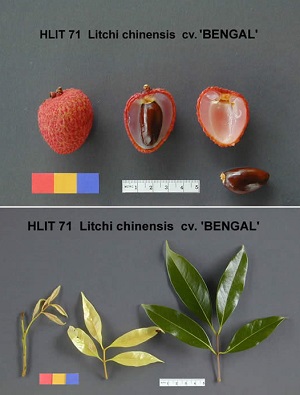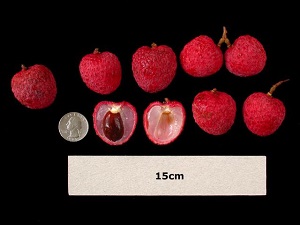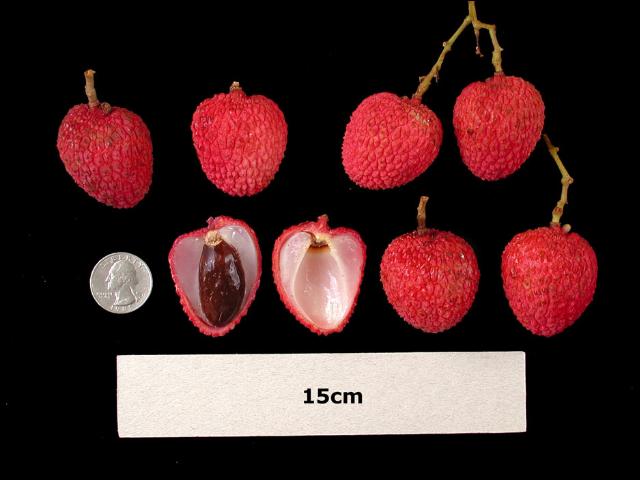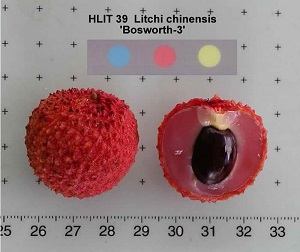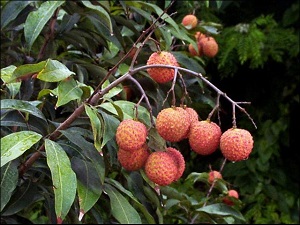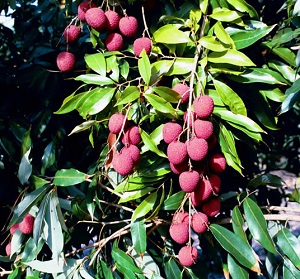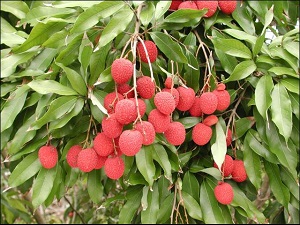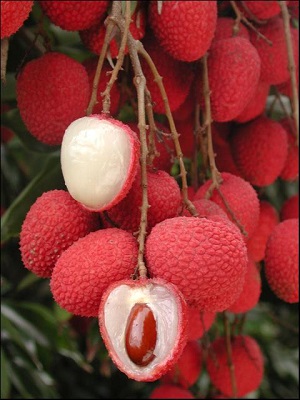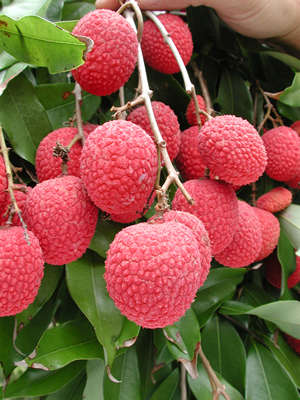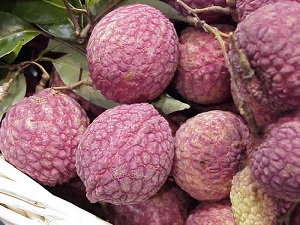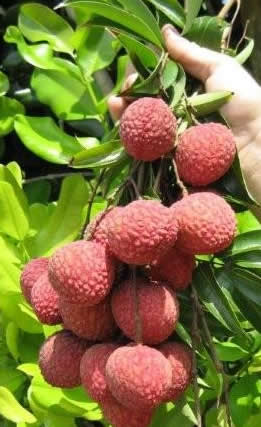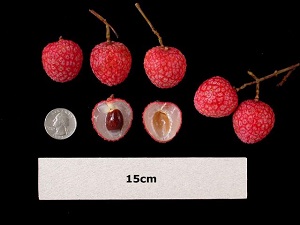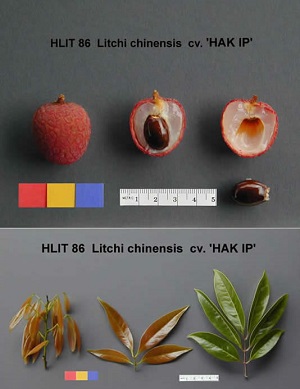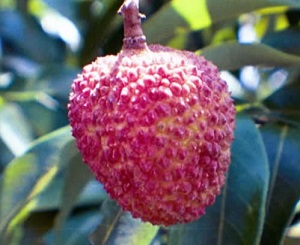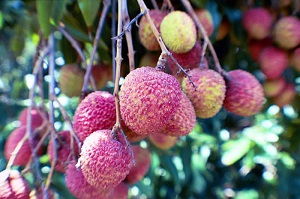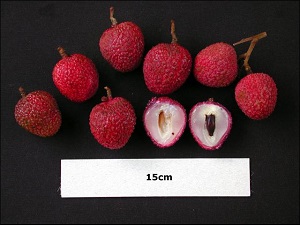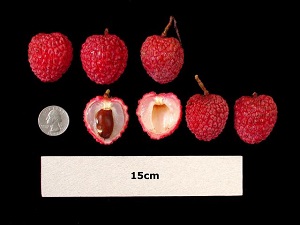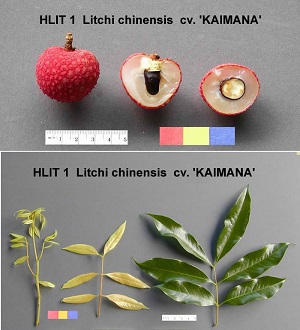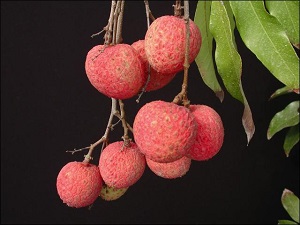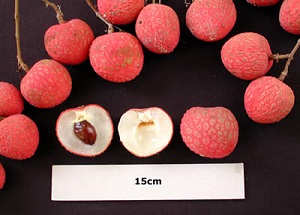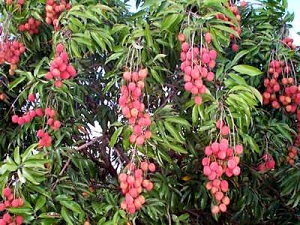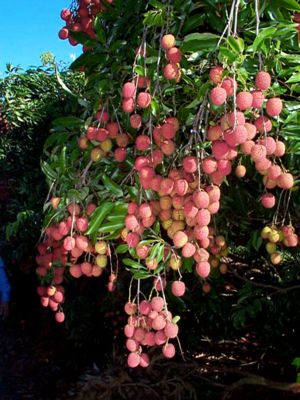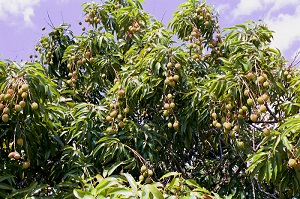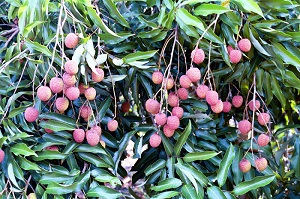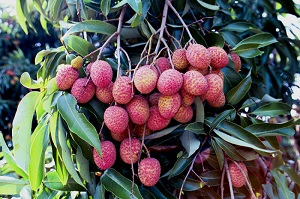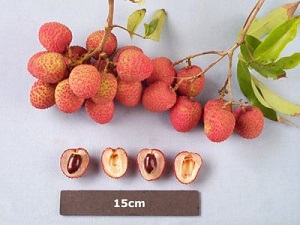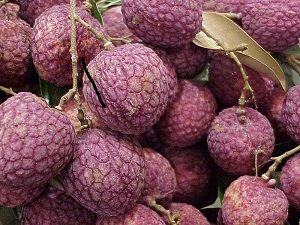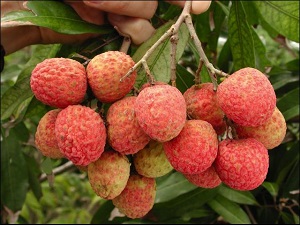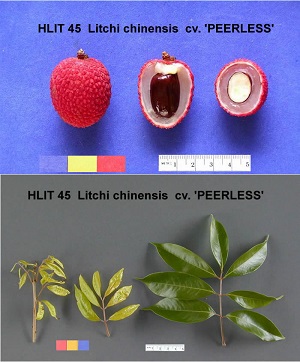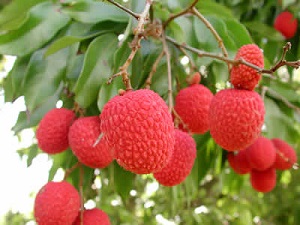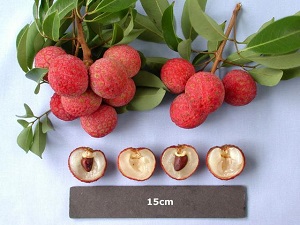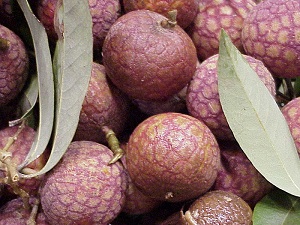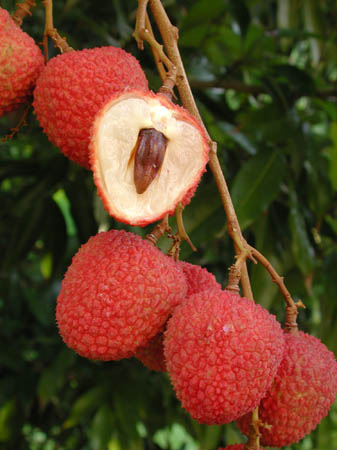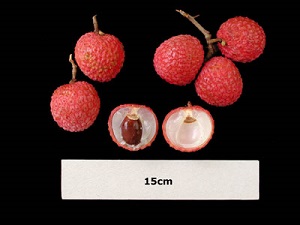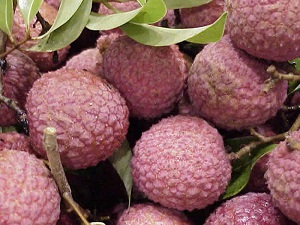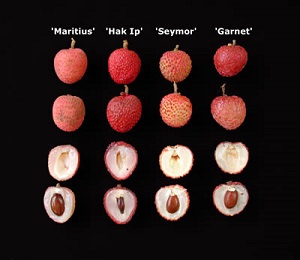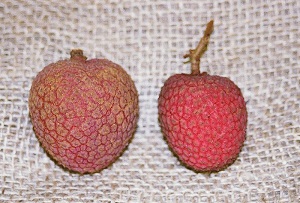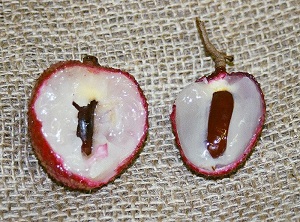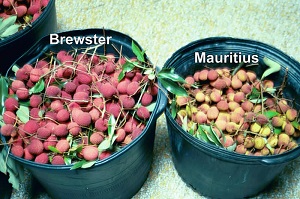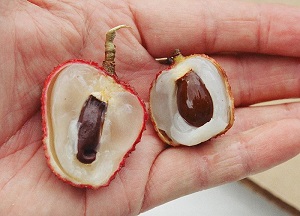Lychee Varieties Go To Differences Between Varieties
The 'Emperor' is an unusually large variety of lychee. It is good tasting with a large seed. The skin (pericarp) of the fruit has very distinct bumps. This is a mountain variety, adapts well to container culture and tends to fruit consistently. The only problem with the Emperor is that the tree is very slow growing and there are not commercial quantities available. 1
The 'Hak ip' lychee, introduced into South Florida just prior to hurricane Andrew, has experienced widespread commercial plantings and is just now beginning to come into significant production. The 'Ha-Kip' is arguably the ideal lychee in that it embodies all of the desirable characteristics that growers and aficionados desire: large size, great flavor, a tiny seed and darker red coloration. 1
'No Mai Tsz', the world's most sought-after lychee because of its exceptional flavor, often has only a single, shriveled seed inside, nicknamed a "chicken tongue" for its odd appearance. 2
The 'Sweet Cliff' fruit tends to be smaller than it's popular cousins, the 'Brewster' and 'Mauritius' varieties. The fruit is good tasting and the trees tend to be slow growing with a smaller habit of growth. 'Sweet Cliff' trees are common among collectors of different varieties; however this is not a commercial fruit. 1
These are three typical panicles of Sweetheart™ lychee fruit. Notice the Mauritius fruit on the lower left hand side of the center panicle. 1
Differences Between Varieties
Notice the size of a ripe 'Hak Ip' fruit (left) compared to a ripe 'Brewster' (right). Depending on the amount of rainfall, the 'Brewster' fruit can grow as large as 'Hak Ip' and 'Emperor'. Both are very delicious, but the 'Hak Ip' seems to be rated the best by most everyone who tastes one. The only problem being that 'Hak Ip' are very shy bearing trees. This photo (Fig. 42) shows a cross section of the same two fruit. The 'Hak Ip' is on the left and the 'Brewster' is on the right. You will note the amount of flesh in the 'Hak Ip' and the chicken tongue seed. 1
You can see that the color of the 'Brewster' & 'Mauritius' fruit is very different. The 'Mauritius' is pink-green or pink-yellow when ripe. The 'Brewster' get red-purple and is a bigger, sweeter & juicier fruit than the 'Mauritius', however it has a full size seed about half of the time. 1 (Fig. 44) the 'Sweet Heart'TM fruit is characterized by a small seed and a lot of flesh, when compared to a 'Mautitius' (shown on the right) it is obvious why the 'Sweet Heart'TM is so desirable. 1 Back to Lychee Page |
||||||||||||||||||||||||||||||||||||||||||||||||||||||||||||||||||||||||||||||||||||||||
| Bibliography 1 Mee, Bill and Folino, Krystal. lycheesonline.com. N.d. Web. 11 June 2014. 2 Wood, Marcia. "New Options for Lychee and Longan Fans and Farmers." ars.usda.gov. USDA Agricultural Research Service. May 2004. Web. 22 Mar. 2015. Photographs Fig. 1,4,15,20,23,32 "Photo Gallery of Litchi Accessions." Last Modified: 13 Nov. 2013. Tropical Plant Genetic Resources and Disease Research. ars.usda.gov. Web. 11 June 2014. Fig. 2,3,5,6,7,8,9,10,13,14,18,19,21,22,23,24,25,29,31,33,34,38,40 Maguire, Ian. Lychee Growing in the Florida Home Landscape. Revisions Oct. 2008 and Oct. 2013. edis.ifas.ufl.edu. Web. 24 Jan. 2014. Fig. 11,12,16,17,26,27,28,30,35,36,37,39,41,42,43,44 Mee, Bill and Folino, Krystal. N.d. lycheesonline.com. Web. 11 June 2014. Published 24 Jan. 2014 LR. Last update 6 June 2015 LR |
||||||||||||||||||||||||||||||||||||||||||||||||||||||||||||||||||||||||||||||||||||||||
